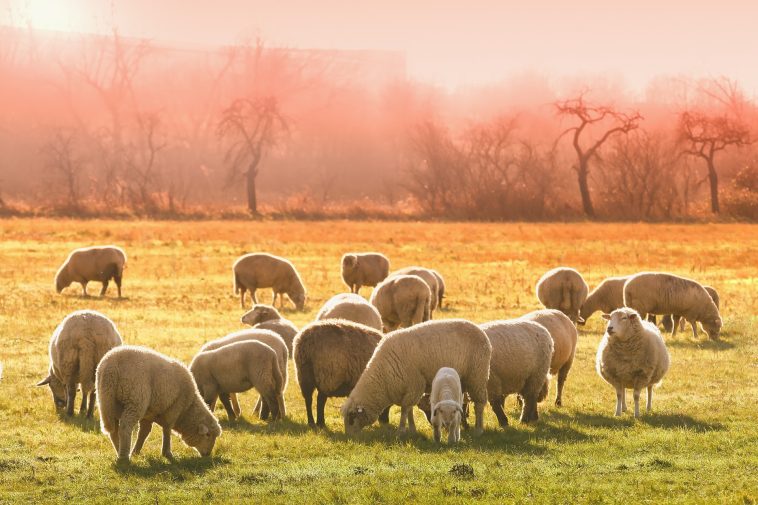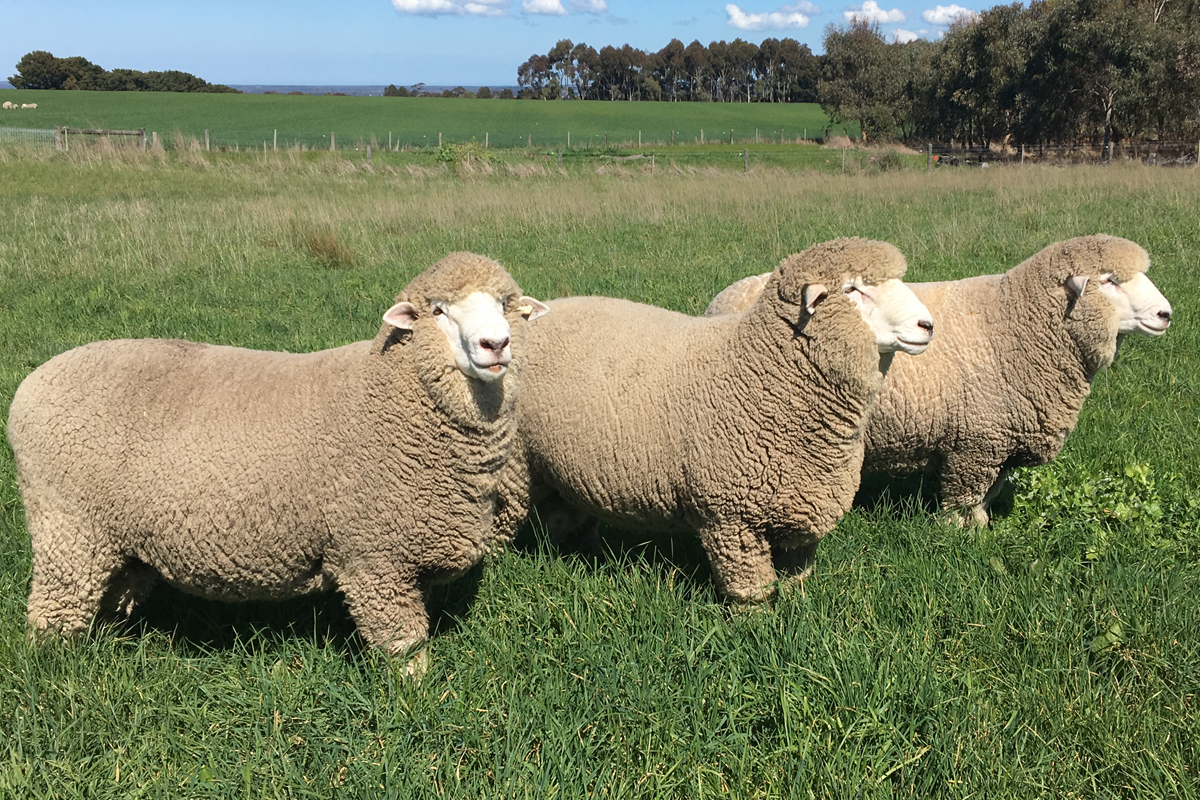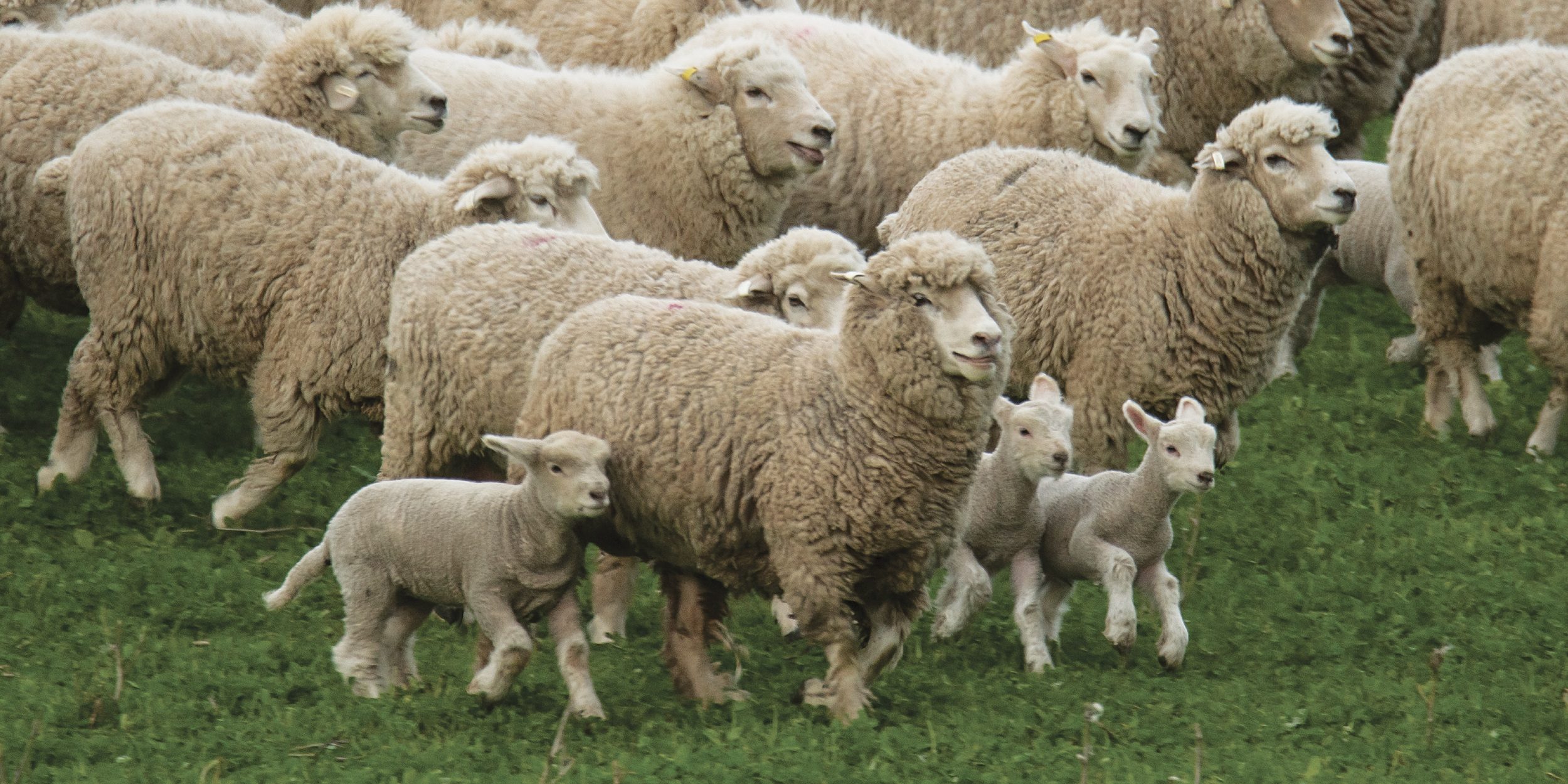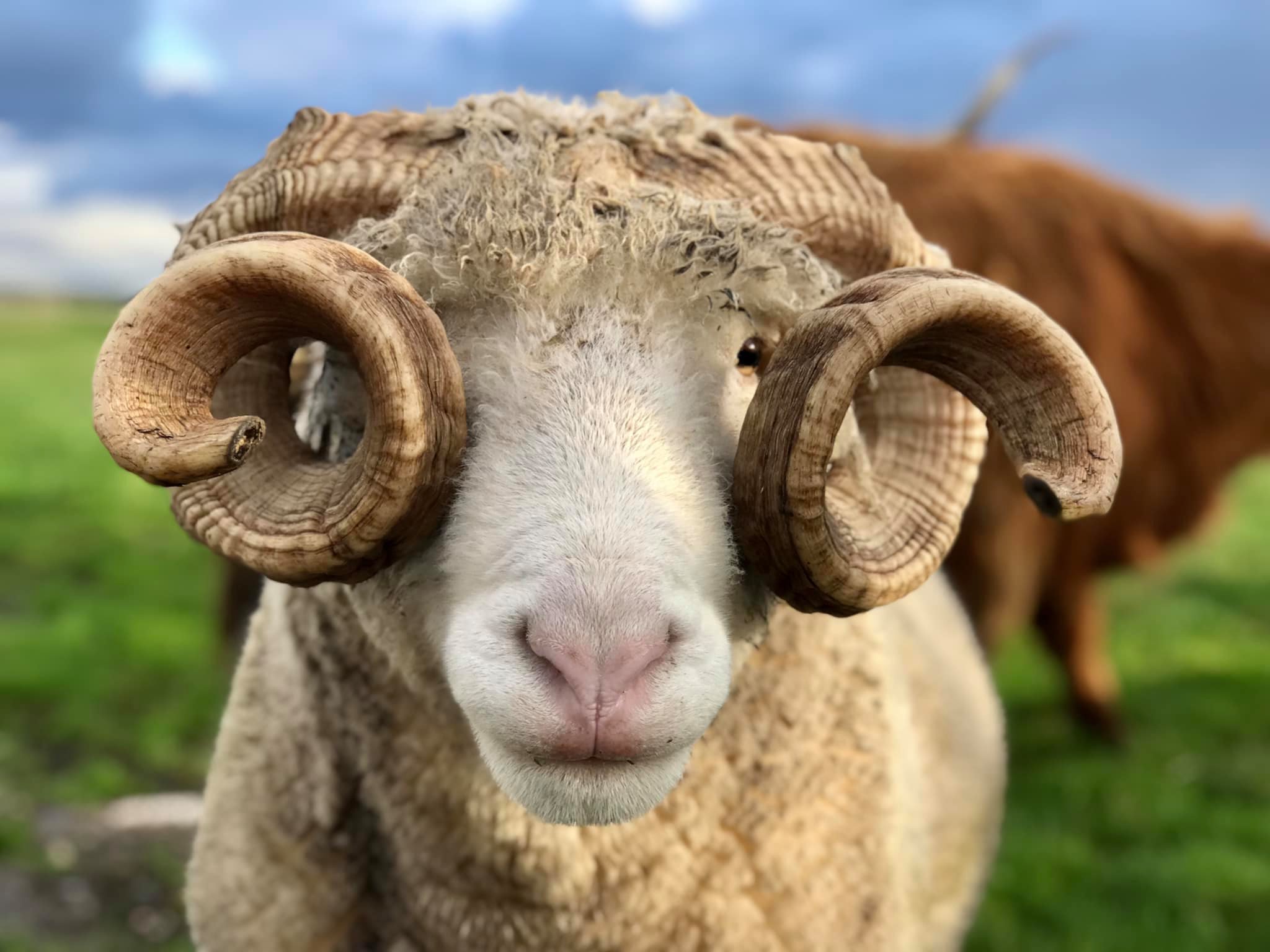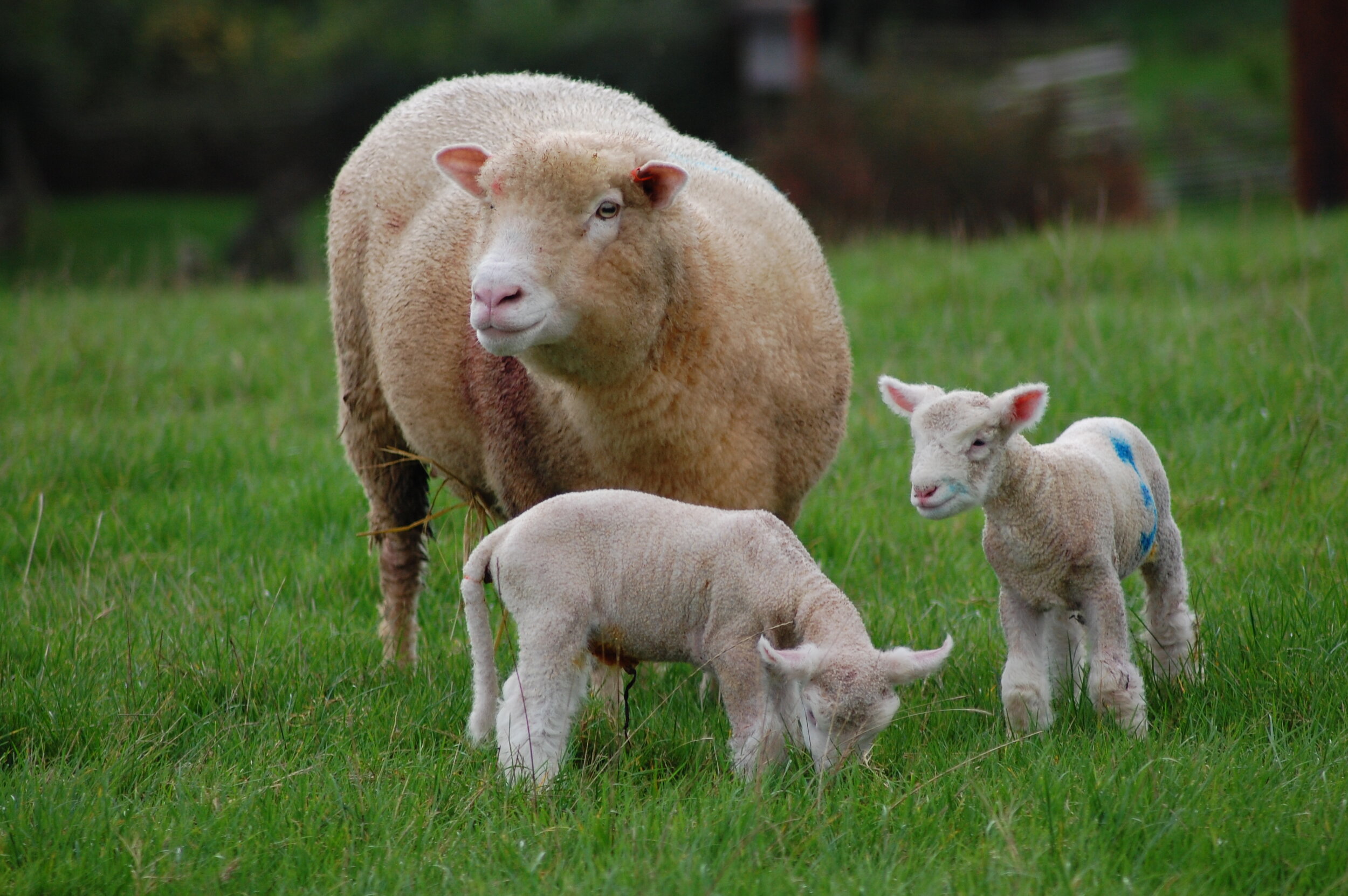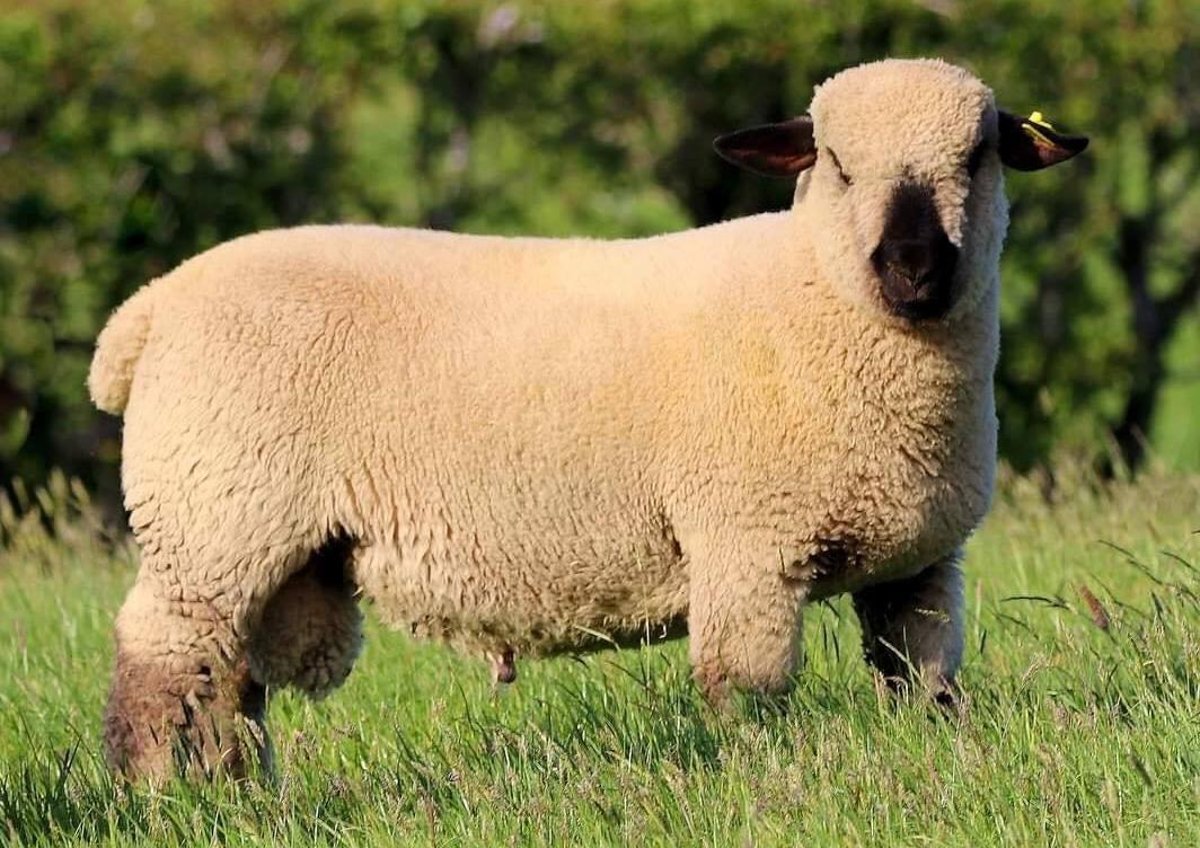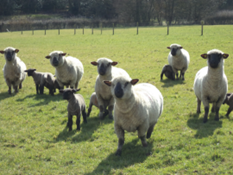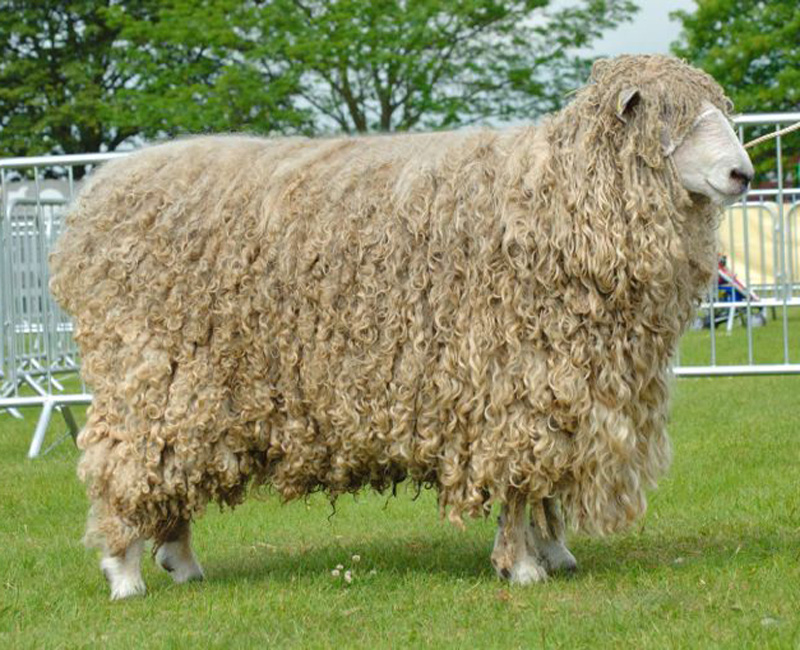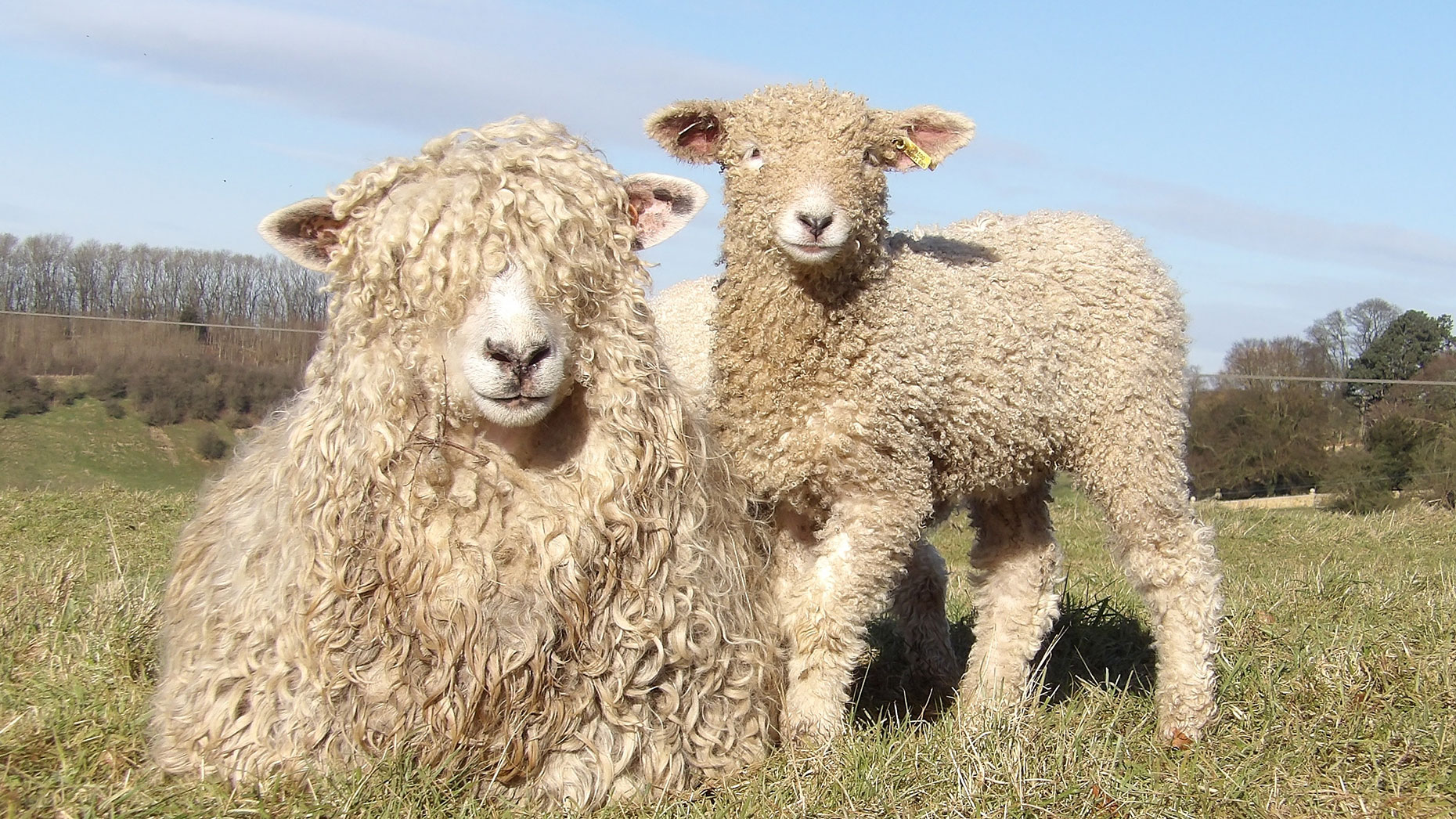The physical appearance of a sheep can be a significant factor in determining its overall characteristics. However, the breed’s ability to achieve the highest levels of productivity and profit is the only factor that can account for the significance of this appearance.
Dorset
- Three Corriedale rams with good stature. (Source: corriedale.org.au)
- Corriedale ewes with their lambs. (Source: nzfarmlife.co.nz)
Dorsets are medium-sized, all-white sheep that can be horned or polled. They have desirable carcass qualities due to their good body length and muscle conformation. The fleece is extremely dense, tightly packed, and it does not contain any dark fibres at all.
Dorset ewes typically produce a fleece weighing between 2,25 and 4 kilogrammes with a yield of 50 to 70 percent. The length of a staple can range anywhere from 6 to 10 centimetres. It is anticipated that the diameter of the fibres will range from 33 to 27 microns.
The average weight of a mature Dorset ewe is between 68 and 90 kilogrammes; however, ewes that are in show condition can easily weigh more. The average weight of a Dorset ram is between 102 and 125 kilogrammes.
The Dorset is one of the few breeds that can breed “out of season,” making it one of the more unique types of sheep. It is not uncommon to see multiple births, and the ewes are known to be excellent mothers and milk producers. Both in the ewe flock and in commercial settings, Dorsets can be useful in their capacity as terminal sires.
Corriedale
- A Dorset ram with large curled horns. (Source: Facebook by Windmill Animal farm)
- Polled Dorset ewe with twin lambs. (Source: homefarmdulas.co.uk)
Both New Zealand and Australia contributed to the development of the Corriedale breed. After Leicester (long-wool) rams and Merino ewes were bred together, the Corriedale breed was developed through line breeding and thorough selection among the offspring of those animals.
The Corriedale sheep breed is valuable because it can be used to produce both wool and meat. It is polled and has a high-quality carcass, in addition to having a large frame size. Although the historical purpose of the Corriedale has been to produce premium lambs when mated to sires of meat breeds, the breed is now achieving performance levels comparable to those of purebred lambs. This is because Corriedales are more genetically diverse than purebred lambs.
This benefit, along with the breed’s high monetary value as a skin, makes it likely that the animal will continue to be a popular breed.
The wool produced by Corriedale sheep typically has a diameter ranging from 31,5 to 24,5 microns and is known for its high yield. The fleece of a mature ewe can be quite valuable; its weight can range anywhere from 4,5 to 7,7 kilogrammes, and its staple length can be anywhere from 9 to 15 centimetres.
The yield percentage of the fleece ranges between 50 and 60 percent. The typical adult ram weighs anywhere between 79 and 125 kilogrammes, whereas the typical adult ewe tips the scales between 59 and 81 kilogrammes.
Lincoln
- A Hampshire ram with a lot of muscle. (Source: farminglife.com)
- Hampshire ewes along with their lambs. (Source: ardenandaspleyflocks.com)
The mature weight range of Lincoln rams is between 113 and 160 kilogrammes, while the mature weight range for ewes is between 90 and 113 kilogrammes. Lincolns have a form that is somewhat rectangular, a deep body, and show a great deal of width. They have a back that is straight and strong, and their wool is thick. They frequently lack fullness through the leg and have the appearance of being somewhat upright when their fleece is short.
The Lincoln’s fleece is carried in thick locks that are frequently twisted into a spiral toward the end. Lincolns should have dense wool growth up to their knees and hocks; however, it is not uncommon for certain individuals to have wool growth below these points.
The staple length of Lincolns is among the longest of all the breeds, ranging from 20 to 38 centimetres, and the yield can be anywhere from 65 to 80 percent. Lincolns are bred to produce good quality wool. Lambs, and even sometimes older sheep, will have a part of their fleece running over their back.
Lincoln ewe fleeces can weigh anywhere from 5 to 9 kilogrammes, making their wool the coarsest and heaviest of all long-wooled sheep varieties. The fibre diameter of the fleece can be anywhere between 41 and 33,5 microns, and its numeric count ranges from 36 to 46. The lustre of the fleece is quite impressive, even though it is coarse and has a hair-like appearance.
The Lincoln has a large carcass that is lean and well-muscled throughout. The prolificacy of the Lincoln is about average. Since mature ewes are easy feeders, they can sometimes become overonditioned, and as a result, they do not breed as frequently as breeds that have a lower aptitude to take on fat.
Lincolns are hearty eaters that can make excellent use of a plentiful supply of high-quality roughage or pasture. Lincolns are bred in the United States. The Lincoln should have clear white colour markings, and its head should be larger and more pronounced than the heads of other long-wooled breeds.
The breed is characterised by the presence of a forelock that sits in the space between the ears; when allowed to develop naturally, this forelock is relatively subtle.
Hampshire
- The Lincoln ram has a fleece that is covered in thick locks. (Source: lincolnlongwools.co.uk)
- Lincoln ewe with her lamb. (Source: thelincolnite.co.uk)
The Hampshire Standards were developed to focus primarily on the characteristics that researchers have identified as contributing to a higher level of productivity in individuals. The characteristics of multiple births, weight relative to age, face covering, refinement about the head and shoulders, muscling, and freedom from unsoundness are given a significant amount of weight in the selection process. Two of the most notable things about Hampshires are how fast they grow and how well they use the food they eat.
The Hampshire is a breed of sheep that is known for its gentle temperament, large size, and open face. To be considered mature, rams should weigh at least 125 kilogrammes and ewes should weigh at least 90 kilogrammes when they are mature adults. The ears should be of average length, fairly thick, covered with coarse hair that is either dark brown or black, and free of wool.
The face should be a decent length, have a dark colour, and be nearly devoid of wool from the eyes down. A continuous woolcap should be seen that extends from the neck to the top of the head. Wool should be kept to a minimum on the lower part of the legs, between the knee and the hock.
The Hampshire should have quality without any signs of weakness and size without any signs of being rough.
A mature ewe’s fleece weighs between 2,7 and 4,5 kilogrammes, has a micron measurement of 25 to 33, and a spinning count of 46 to 58. The staple length of the fleece will range from 5 to 9 centimetres, and the yield percentage will be between 50 and 62 percent.
References
Oklahoma State University Board of Regents. (1995). Sheep Breeds – Breeds of Livestock, Department of Animal Science. Available at: http://afs.okstate.edu/breeds/sheep

